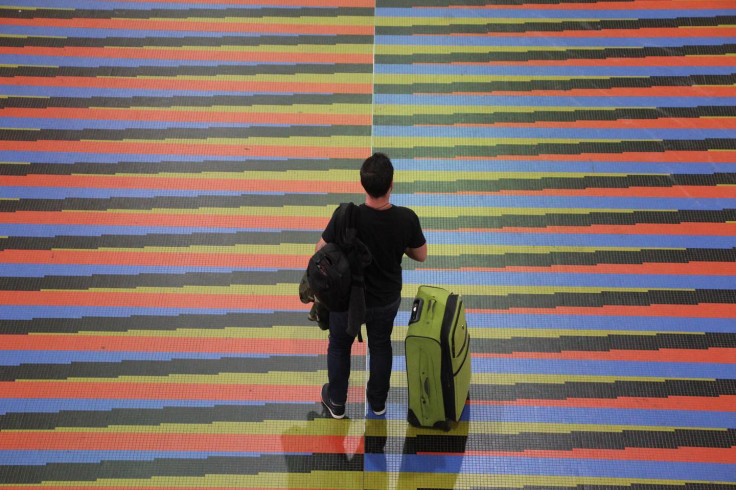
When U.S. Deputy Secretary of State Christopher Landau shared a photo of the Carlos Cruz-Diez mosaic at Caracas's Simón Bolívar International Airport, he wrote just five words: "If you know, you know." To most Americans, it looked like a striking piece of modern art. For millions of Venezuelans, it was a gut punch of recognition and a signal.
The mosaic, with its kaleidoscope of shifting colors, has become more than an artwork. It is the backdrop for one of the largest migrations in modern history. Every Venezuelan who has flown out of Maiquetía airport in search of a safer, more stable life has walked across those tiles. For the exiles who never returned, it is the last image of home burned into memory.
The Mosaic as Witness
Created by kinetic artist Carlos Cruz-Diez, the floor stretches across the main hall of Venezuela's busiest airport. For decades, it welcomed travelers with optimism. In the last 20 years, it has silently borne witness to heartbreak: young families heading to Miami with one-way tickets, doctors bound for Bogotá, students clutching visas for Madrid, and grandparents waving goodbye to children they may never see again.
Landau's post didn't need explanation. As one Venezuelan user replied under the tweet, "Ese piso nos vio llorar" (that floor saw us cry.)
If you know, you know. pic.twitter.com/q5ek23Nuqn
— Christopher Landau (@DeputySecState) September 9, 2025
A Diaspora of Historic Scale
The Venezuelan exodus is the largest in Latin America's modern history. According to the United Nations Refugee Agency (UNHCR), more than 7.7 million Venezuelans have left the country since 2015, fleeing hyperinflation, shortages, political persecution, and an increasingly authoritarian government. Colombia hosts over 2.8 million, while Peru has around 1.5 million. Significant communities have also taken root in the United States, Spain, and Chile.
For perspective, Venezuela's exodus is now second only to Syria's globally. In South Florida, entire neighborhoods have reshaped around Venezuelan migration, from Doral, nicknamed "Doralzuela," where 48% of the population of the city in Miami-Dade county, to Weston and Orlando. Each community carries the memory of that mosaic floor under their shoes.
Landau's Subtle Diplomacy
By choosing this image, Landau was not just sharing nostalgia. The timing matters. His post came as the U.S. steps up operations in the Caribbean, deploying warships and fighter jets near Venezuela and blaming Nicolás Maduro's regime for enabling transnational criminal groups. Washington has linked Maduro's inner circle to narcotrafficking, gold smuggling, and alliances with cartels.
Landau, who lived in Venezuela as a young man, has often spoken with rare personal warmth about the country's crisis. Earlier this year, he responded to opposition leader María Corina Machado, writing: "Venezuela is living a long nightmare, but it will come to an end."
Machado also posted this week her own cryptic message: a photo of her bed with a turquoise pillow with an embroidered image of clouds and a plane, and the text "everything is going to be OK."
If You Know, You Know
The phrase "If you know, you know" has become internet shorthand for shared experience. For Venezuelans, it points to something deeper: the private grief of leaving and the collective memory of a floor that has seen more goodbyes than any single piece of art should.
It also reflects how the Venezuelan diaspora has turned symbols into anchors. The Cruz-Diez mosaic is no longer just public art. It is a memorial for departure and resilience, a reminder that identity travels even when you are forced to leave your home.
© 2025 Latin Times. All rights reserved. Do not reproduce without permission.







